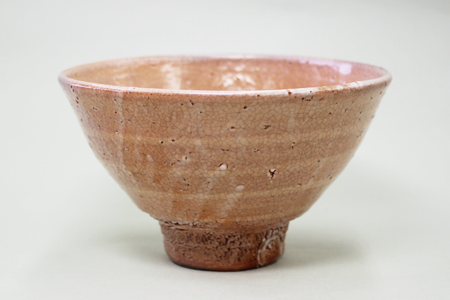It’s been a while since I wrote a universiTEA post and today, I want to explore (keyword: explore, not answer) the question: can crazing in teaware ever be a good thing?
What is Crazing?
For the uninitiated, crazing (or crackling) refers to the network of fine lines that develop in teaware. These are very fine lines that occur when there’s tension in the glaze. Essentially, these are very tiny cracks in the glaze of the cup and if coffee or tea get into it, they can be stained.
Generally, crazing is seen as a based thing because:
- It weakens the integrity of the cup
- Some people believe that there are food safety issues if plates/cups with crazing are used because bacteria can grow in the cracks
Regarding the food safety aspect, I’m going to ignore that for this article because I assume most people would be washing their dishes and not leaving it wet for long periods of time and creating a good environment for bacteria. I also saw this study from the Ceramic Arts Network that concluded that if you wash the pieces, especially in a dishwasher, bacteria will be killed off. In other words, if you observe proper care for your teaware, food safety should not be an issue.
Case study: Ru Ware

If you’ve looked at Chinese teaware and its history, you probably would have come across Ru Ware before. Despite being produced only for a brief time, possibly only for twenty years or so, during the Song Dynasty, the pieces that have survived are highly desired. A dish auctioned at Sotheby’s Hong Kong in 2017 fetched a price of HK$294.3 million (around USD$38 million).
All Ru Ware share the same shade of blue, a colour that was inspired by a dream that the emperor Song Huizong had. After waking up from a dream where he saw the blue sky through the clouds after the rain, he commissioned potters to replicate the shade. Apart from its colour, Ru Ware is also associated with crazing. However, while some consider this to be a desired feature of Ru Ware, an essay by Sotheby argues pretty persuasively that non-crazed Ru Ware was more highly valued than crazed Ru Ware. Was the acceptance of crazing due to its aesthetic properties or because the rarity of Ru Ware made it so that even those with crazing were seen as desirable?
At this stage in time, we may never know with certainty. While we do have some concepts that value impermanence, it would be premature to jump to the conclusion that the ancients would have thought in that way.
Case Study: Hagi Yaki Ceramics

Hagi Yaki is a type of pottery from Japan that was created by two Korean potters. In the 16th century, Toyotomi Hideyoshi launched an invasion of the Korean peninsula. I won’t go into detail on the war, but one side effect of the invasion is that it resulted in many Korean potters being transplanted to Japan (This continued for some time, as seen by the potters’ grave at Okawachiyama).
Hagi yaki has a few characteristics, such as a simple style with use of natural colours (though this seems to be changing), a notch at the base of the piece, and crazing. Yes, crazing is a feature of Hagi yaki and the changing colour of the crazing as the piece is used is known as the 「萩の七化け (hagi no nanabake)」. In other words, this is a piece that’s meant to age with you. Of course, you have to look after the piece, or the piece may “rot”, as one article puts it.
The reason for crazing in Hagi Yaki appears to come from the type of clay used. This clay is derived from very soft soil, which in turn lends itself to the formation of crazing in the finished piece. In fact, several sources talk about the possibility of the hagi yaki bowl/cup leaking during its first use! The solution to this is to pour thick tea (matcha is a possibility) or rice gruel (or the water from making porridge/rice) into the bowl and let it sit in the piece for a day before washing it.
Clearly, when it comes to Hagi Yaki, the crazing is a good thing! But it also makes the cups and you will need to take proper care of it.
Some thoughts on the topic
So can crazing be seen as a good thing? Even after doing some reading into the subject, I can’t really find an answer. I know that when it comes to my vintage teacups, I take crazing as a sign that they are well-used; possibly I could be changing the way I drink tea or wash the cups to prevent crazing, but I would rather keep using the cups for as long as possible and enjoying them the way I want to. After all, at the end of the day, I’m not a teacup collector, I’m a teacup user.
But what about you? If you have any vintage cups and/or have thoughts on the topic, I’d love to know! And if you want to read more about Ru Ware and Hagi Yaki, I recommend the following sources:
Sothebys Essay (scroll down past the description to find it)
Hagi Pottery Association (in English)
Hagiyaki Kaikan (in Japanese)
